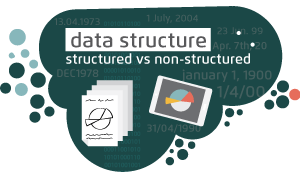10 best practices you should be doing now

Want to be a “best in class” organization? Then follow the lead of highly successful companies and adopt these 10 practices in your own operation.
In today’s economic environment, doing what you’ve always done—even if you do it very well—is no longer acceptable. Under pressure to contain costs and produce results despite challenging circumstances, you (and many other supply chain managers) must transform rather than simply improve your operation. That means adopting the philosophies, methods, and processes that will make your organization “best in class.”
What makes a supply chain organization best in class? The answer will vary for each company, but there are some practices that many leading companies are adopting now. This article will outline 10 of the key practices that I and my colleagues have observed through our work as supply chain consultants with clients in a variety of industries and locations.
1. Establish a governing supply chain council.

A governing council’s purpose is to give direction and help align supply chain strategy with the company’s overall strategy. The council’s membership should include the leader of the supply chain organization as well as corporate executives, business unit managers, and other influential company leaders. Ideally the council should hold regularly scheduled meetings. But even if it doesn’t, its mere existence will indicate that supply chain management has the endorsement and commitment of senior leadership.
We often see supply chain organizations struggling for recognition because their objectives and strategies differ from their companies’ stated objectives and strategies. A governing council can prevent that from happening by providing constant, consistent validation that the supply chain strategy directly correlates with the corporate strategy.
The council can also help to remove barriers to success that exist within the organization. Every company has such barriers—usually individuals or organizations that don’t see or accept the value that a wellmanaged supply chain provides. By addressing these barriers, members of the council help to ensure that the supply chain organization is given the opportunity to perform up to its potential. When it is clear that the executive leadership is fully embracing the supply chain organization, it is likely that key business-unit stakeholders will be more willing to work with and support supply chain efforts and initiatives.
Finally, the council provides an effective forum for cross-functional communication. An active governing council creates an opportunity for business unit leaders to provide the supply chain management leadership with information regarding future strategies and projects.
2. Properly align and staff the supply chain organization.
It can be difficult to organize the supply chain function in a way that will maximize its effectiveness and bring commensurate benefits to the company. Some companies are best served by embedding proficient supply chain management professionals in various business units. For others, a more centralized operation is most effective. Many of the progressive companies we have worked with, however, have adopted a hybrid approach that combines a centralized strategy to gain consensus with decentralized execution to improve service.
Another emerging trend we have seen involves placing procurement, logistics, contract management, and forecasting/demand planning and similar management functions under the supply chain leader. This approach, depicted in Figure 1, is not appropriate for all companies, but it does give an idea of current thinking about supply chain management and the reporting structure.
Whatever structure you adopt, correctly staffing the supply chain organization is vital to success. Elevating staff members’ supply chain management skills and knowledge is always a priority, of course. But top leadership focuses more on strategy and is less concerned about transactional ability. As supply chain leaders move up to join their companies’ management teams, therefore, they must have additional characteristics. Best-in-class companies hire supply chain managers who have strong communication and relationship management skills (both internally and externally), the ability to think strategically, and a focus on value creation.
3. Make technology work for you.
Too many companies select software they hope will make them more efficient, and they structure their workflows and processes around that chosen technology. Instead, they should first review the processes that need improvement, and only then select the technology that best satisfies those process needs. That may seem self-evident, but I have seen more than a few companies buy first and figure things out later.
Perhaps that is why in many companies, the supply chain organization seems to be “feeding the system” (such as an enterprise resource planning system) with information, and they have difficulty retrieving the type of data they need for making sound strategy and business decisions.
At best-in-class companies, by contrast, managers understand that “the system” should help them better manage their supply chains. They find a way to use technology to produce beneficial information without having to perform various “work-arounds” to extract and view the data. They recognize the importance of an efficient purchase-to-pay process and have adopted strategies and mechanisms to get the greatest benefits from technology.
4. Establish alliances with key suppliers.
Best-in-class companies work closely with suppliers long after a deal has been signed. In most circles today, this is called “supplier relationship management.” But that implies one-way communication (telling the supplier how to do it). Two-way communication, which requires both buyer and seller to jointly manage the relationship, is more effective. A more appropriate term for this best practice might be “alliance management,” with representatives from both parties working together to enhance the buyer/supplier relationship.
The four primary objectives of an effective alliance management program with key suppliers include:
- Provide a mechanism to ensure that the relationship stays healthy and vibrant
- Create a platform for problem resolution
- Develop continuous improvement goals with the objective of achieving value for both parties
- Ensure that performance measurement objectives are achieved
With a sound alliance management program in place, you will be equipped to use the talents of your supply base to create sustained value while constantly seeking improvement.
5. Engage in collaborative strategic sourcing. Strategic sourcing is a cornerstone of successful supply chain management. But a collaborative strategic sourcing initiative produces even better results.
Rather than consider strategic sourcing as just a matter for the purchasing department, best-in-class organizations get internal “customers” actively involved in the decision-making process. More importantly, they solicit feedback and information regarding their objectives and strategies from those customers, which may include functional areas such as finance and accounting, engineering, operations, maintenance, safety/health/environment, and quality assurance—any internal business unit or function that will contribute to the initiative’s success. This approach not only ensures availability of supplies but also results in lower total cost, streamlined processes, and increased responsiveness to customers’ changing needs.
6. Focus on total cost of ownership (TCO), not price.
One benefit of strategic sourcing is that it shifts the focus from looking only at the purchase price to understanding the total cost of owning or consuming a product or service. For significant spend areas, procurement teams at best-in-class companies are abandoning the outmoded practice of receiving multiple bids and selecting a supplier simply on price. Instead, they consider many other factors that affect the total cost of ownership. This makes good sense when you consider that acquisition costs account for only 25 to 40 percent of the total cost for most products and services. The balance (and majority) of the total comprises operating, training, maintenance, warehousing, environmental, quality, and transportation costs as well as the cost to salvage the product’s value later on.
Identifying the total cost of ownership requires looking at the entire process of procuring and consuming the product or service, something that can only happen with cooperation and input from both the buyer and the seller. Best-in-class organizations do not stop there, however. They also ask suppliers and internal stakeholders the following important question: “How can we work together to reduce the total cost of ownership?”
Establishing a “total cost of ownership” mindset is a goal that the supply management organization needs to embrace and perpetuate throughout the entire enterprise. It will not be easy, however, to convince your company’s executive leadership to truly prioritize value over price. Since the global financial collapse in 2009, most chief executives have focused on cost reductions, which they expect will translate to reduced prices.
7. Put contracts under the supply chain function.
Purchasing and procurement teams often negotiate significant potential savings during the sourcing process but never fully realize those savings. The reasons for this vary, but they often include a failure to communicate contract terms to the affected organizations and a failure to monitor contract compliance.
All too often, in fact, the executed contract is filed away in some drawer and forgotten. This is no exaggeration; several years ago, the research firm Aberdeen Group asked supply managers the following question in a survey: “How do you manage your company’s contracts?” Their answers were startling. Twothirds of the respondents stated, “We can’t even find the contracts, much less manage them.”
More companies are moving responsibility for contract management to the supply chain organization rather than leaving it in purchasing, legal, finance, or operations. One benefit of this shift is that it ensures the contracts are collected and maintained in a central repository. The migration of the contract management function to the supply chain organization also allows the supply chain leader to more effectively leverage the company’s spend, particularly in the area of services, where there is a great opportunity for cost reduction and risk mitigation.
8. Optimize company-owned inventory.
The global economic downturn means that more chief financial officers have put inventory on their radar screens, and their financial teams are constantly looking for new ways to improve the bottom line and reduce working capital. Supply chain organizations should therefore constantly review their inventory quantities and strive to keep them at an optimal level.
It’s no surprise that best-in-class companies are paying attention to inventory at the highest levels. The “real” cost of holding inventory often is higher than the generally assumed 20 to 25 percent. In fact, recent research reveals that inventory holding costs could represent up to 60 percent of the cost of an item that is held in inventory for 12 months. Those findings included the holding cost of insurance, taxes, obsolescence, and warehousing.
Poor planning and forecasting are direct causes of inventories that are out of balance with a business’s needs. Accordingly, best-in-class companies also are placing more emphasis on demand planning and forecasting as an additional means of ensuring optimal inventory levels.
9. Establish appropriate levels of control and minimize risk.
Supply chain management policies and procedures should follow an appropriate sequence and structure, and it is important to review them frequently (if not constantly) and bring them up to date. Keeping them realistic and easy to understand and follow will help to ensure compliance.
It is certainly possible to go too far in establishing policies and procedures, however. That is why bestin- class companies periodically review their policies and controls to ensure that they are not creating bottlenecks. Their objective is to streamline them without sacrificing the ability of those controls to deter theft, fraud, and other problems.
Risk mitigation goes hand-in-hand with policies and controls, and best-in-class supply chain organizations integrate risk-mitigation methodologies into their sourcing decision process. This is a complicated subject that we can touch on only briefly here, but in short, these organizations are adopting sound methodologies that include: (1) identifying all of the risk elements, (2) determining the probability of the risk event occurring, (3) assessing the dollar impact on the sourcing decision if the risk event actually takes place, and (4) prioritizing risks for monitoring and prevention.
10. Take “green” initiatives and social responsibility seriously.
Reducing a supply chain’s carbon footprint is no longer a “nice but not necessary” practice. It’s likely that a carbon- trading regime will be established in the United States at some point. But here’s another reason why best-in-class companies “go green”: buyers and consumers are taking environmental impact into consideration when they choose suppliers. That is why organizations such as Dun & Bradstreet now produce reports that evaluate “green” companies. We’re also seeing more and more requests for proposal (RFPs) that ask suppliers and service providers to provide information about their green initiatives.
Buyers and consumers are also considering social responsibility when making purchases. Social responsibility consists of a framework of measurable corporate policies and procedures that result in behavior designed to benefit the workplace, the individual, the organization, and the community. Social responsibility is playing an increasingly significant role in best-inclass supply management organizations’ decisions, not just when it comes to purchasing but also in regard to risk evaluation. A company that does not have a meaningful social responsibility program risks criticism from workers and/or consumers.
Roadmap for relevance
The 10 best practices described above do not represent a complete list of every action that top-tier supply chain management leaders are engaging in now. This list does, however, provide some ideas and perhaps a roadmap for a supply chain organization that is striving to be viewed as valued and relevant to its parent company.
Even if you already have implemented many of these practices, the insights and examples offered here will serve to validate your current strategy. And if you aren’t taking all of these steps, then adding the remaining ones to your lineup will help you complete your transformation to a best-in-class supply chain organization.
Source: https://www.supplychainquarterly.com/topics/Procurement/scq201101bestpractices/
Tags
Bestarion Website Admin



